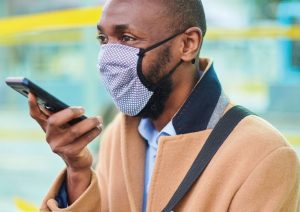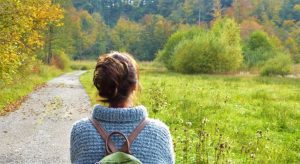Health officials stress small gatherings for Thanksgiving
Chronicle Media and Capitol News Illinois — November 16, 2020
Health officials suggest not presenting a buffet style for Thanksgiving dinner, but rather have one person serve plates to guests and family. (Photo courtesy of Iowa State University)
As in prior times of national crisis, the joy of celebrating Thanksgiving this year will come with an underlying soberness as Americans gather under the cloud of a pandemic that has no end in sight.
As Illinoisans prepare to spend the holiday with family and friends, the Illinois Department of Public Health (IDPH) and the Centers for Disease Control and Prevention is offering recommendations on how to celebrate safer during the COVID-19 pandemic.
During a time when social distancing and limiting the number of people at gatherings is important, special considerations should be taken.
“COVID-19 has changed the way we work, live, and play, and will now change how we plan to celebrate the holidays,” said IDPH Director Dr. Ngozi Ezike. “While the safest way to celebrate is with members of your household and connecting with others virtually, we know, for many, the holidays are all about family and friends, so we want to provide some tips on how to celebrate safer.”
If you are hosting a holiday gathering, limit the number of guests and try to have as many activities outside as weather permits. If your gathering needs to be inside, try to increase air flow by partially opening a couple windows.
Please prepare yourself and your guests to wear masks indoors when not eating and drinking.
Limit your activities in the two weeks before your gathering and ask your guests to do the same. This will decrease the risk of exposure to the virus and further spread.
Try to do gift shopping online by looking at local store websites and choosing pick-up options. Grocery shopping online with delivery and curbside pick-up is also available in many locations. If you need to shop in-person, try to go at a time when stores are not as busy.

Staying with just immediate family on Thanksgiving is recommended this year as COVID-19 rages on. Health officials say to connect with extended family members online. (Courtesy of the CDC)
Think about the seating arrangements if you are planning a meal. Keep members of the same household together and try to put space between one family and another.
When serving food, avoid a buffet-style or potluck setting and consider having one person serve all the food so that multiple people are not handling the serving utensils. Also try to limit the number of people going in and out of areas where food is being prepared — like the kitchen and dining room.
If you are sick, do not travel and do not attend gatherings and celebrations. Even if your symptoms are mild, you may still be able to infect others, and no one wants the gift of sickness this season.
To help stave off illness, get your flu vaccine now. It takes the body several weeks after receiving the vaccine to build up antibodies that will help protect you from flu, so get it now to help protect you and others during the holidays.
Risk levels for activities
Staying home is the best way to protect yourself and others. If you must travel, be informed of the risks involved.
Lower risk
- Having a small dinnerwith only people who live in your household
- Preparing traditional family recipes for family and neighbors, especially those at higher risk of severe illness from COVID-19, and delivering them in a way that doesn’t involve contact with others
- Having a virtual dinner and sharing recipes with friends and family
- Watching sports events, parades, and movies from home.
Moderate risk
- Having a small outdoor dinner (if weather permits) with family and friends who live in your community
- Attending a small outdoor sports events with safety precautions in place
Higher risk
Avoid these higher risk activities to help prevent the spread of the virus that causes COVID-19:
- Going shopping in crowded stores just before, on, or after Thanksgiving
- Participating or being a spectator at a crowded race
- Attending crowded parades
- Using alcohol or drugs, which can cloud judgement and increase risky behaviors
- Attending large indoor gatherings with people from outside of your household.
For more holiday safety tips, go to the IDPH website under guidance and to the CDC, www.cdc.gov under holiday celebrations.
Holiday travel guidelines, risks
Staying home is the best way to protect yourself and others. If you must travel, be informed of the risks involved, according to the Centers for Disease Control and Prevention.
Traveling increases the chance of spreading COVID-19. When planning travel, consider the mode of transportation.

The CDC strongly recommends that everyone wear a mask while traveling to reduce the spread of COVID-19. Traveling on public transportation can make getting and spreading the virus more likely. (Photo courtesy of CDC)
Before packing up for a holiday trip, learn which travel activities are lower risk to protect yourself and others. Keep in mind that getting from one place to another is just one piece of the travel risk. Your activities and who you interact with before, during, and after travel may increase your risk.
Carry a small personal sanitizing kit that contains hand sanitizer, disinfecting wipes, and extra masks.
Be aware of the risk level of your destination. Illinois county-level risk metrics, as well as U.S. and international data, are available on the Illinois Department of Public Health (IDPH) website.
A person’s chances of getting COVID-19 while traveling depends not only on the length of the trip and the number of stops, but also on whether you and those around you take precautions, such as wearing masks and staying at least 6 feet away from other people.
During car travel, making stops along the way for gas, food, or bathroom breaks can put you and your traveling companions in close contact with other people and frequently touched surfaces. If traveling in a RV, you may have to stop less often for food or bathroom breaks, but you could still be in close contact with others while staying at RV parks overnight and while getting gas and supplies at public places.
Traveling on buses and trains for any length of time can involve sitting or standing within 6 feet of others, which may increase your risk of getting COVID-19. If you choose to travel by bus or train, learn what you can do to protect yourself on public transportation.
Air travel requires spending time in security lines and airport terminals, which can bring you in close contact with other people and frequently touched surfaces.
Most viruses and other germs do not spread easily on flights because of how air circulates and is filtered on airplanes. However, keeping your distance is difficult on crowded flights, and sitting within 6 feet of others, sometimes for hours, may increase your risk of getting COVID-19.
If you plan to have or be an overnight guest, the host and guests should communicate about what is expected ahead of time.
Consider the health of those in your home and those visiting, including older adults and individuals with medical conditions that put them at higher risk of severe illness.
Identify a room where an individual can isolate should they develop symptoms or test positive while visiting.
Make sure everyone understands the importance of wearing a mask and social distancing. Ensure that soap and sanitizer are available, and clean frequently touched surfaces.
(Source: The Centers for Disease Control and Prevention and IDPH)








